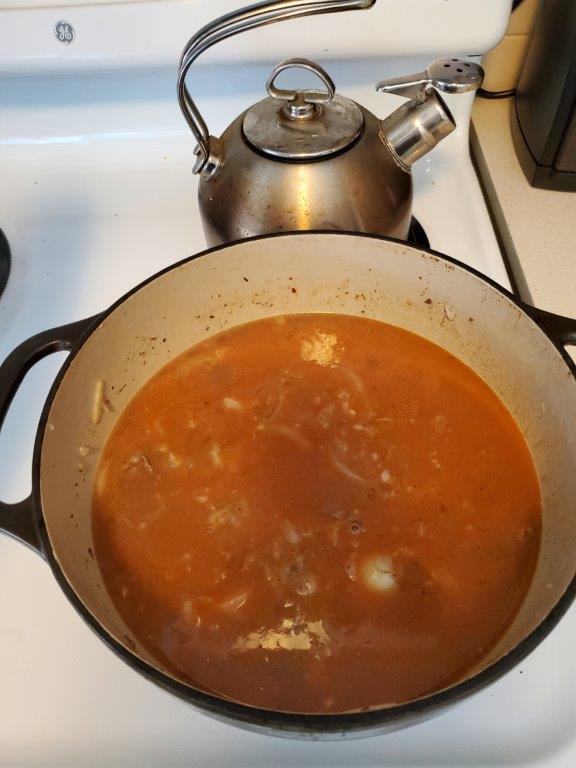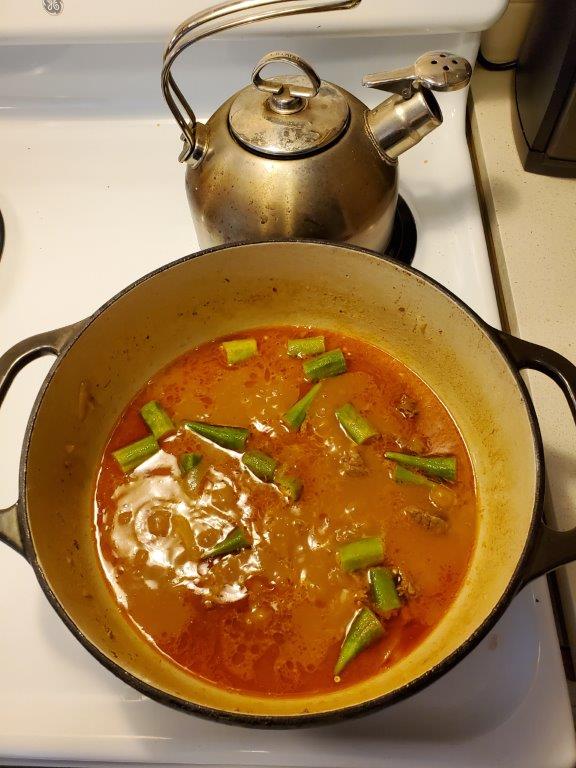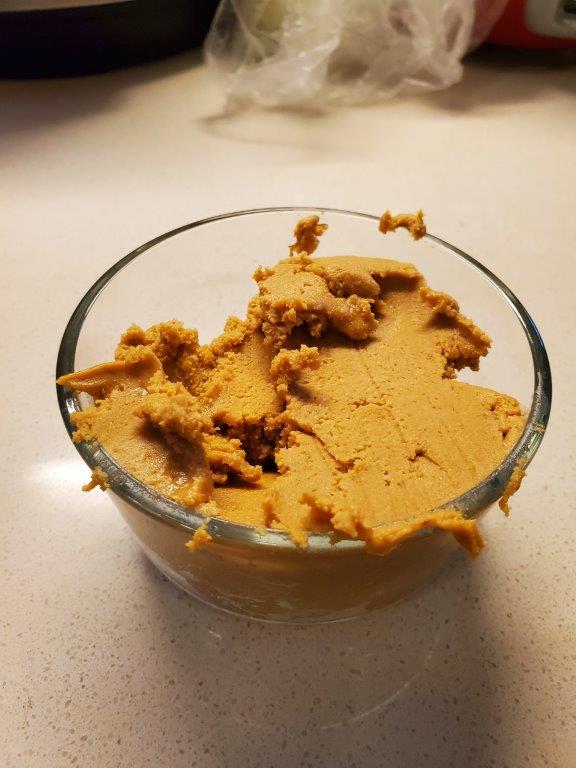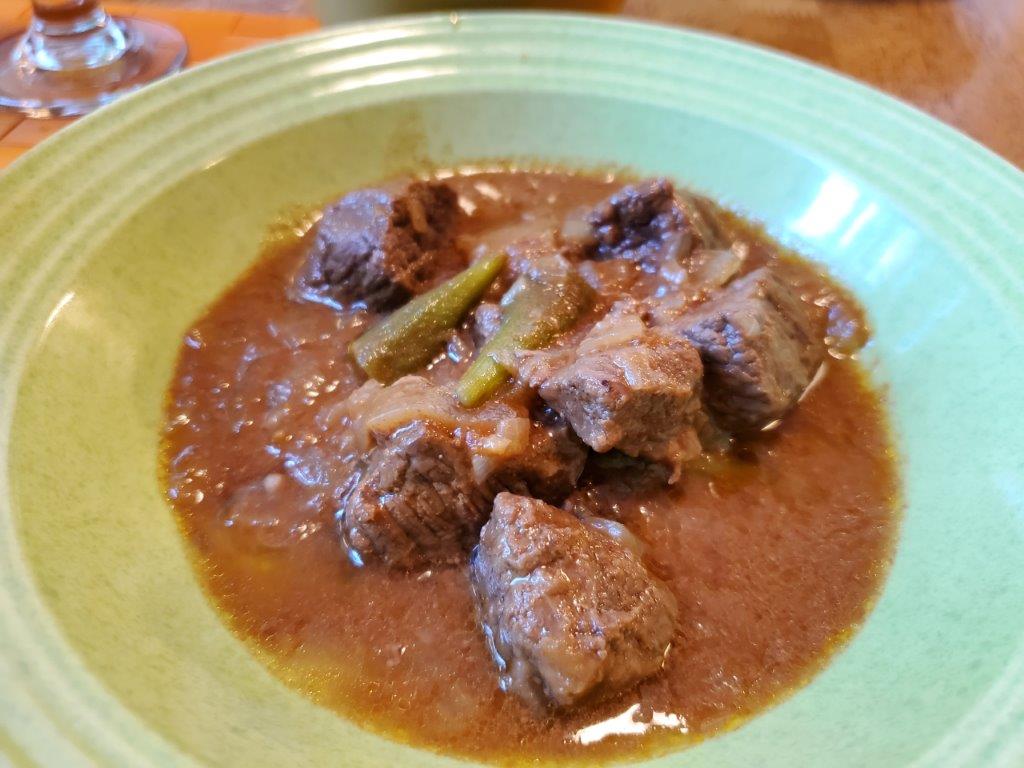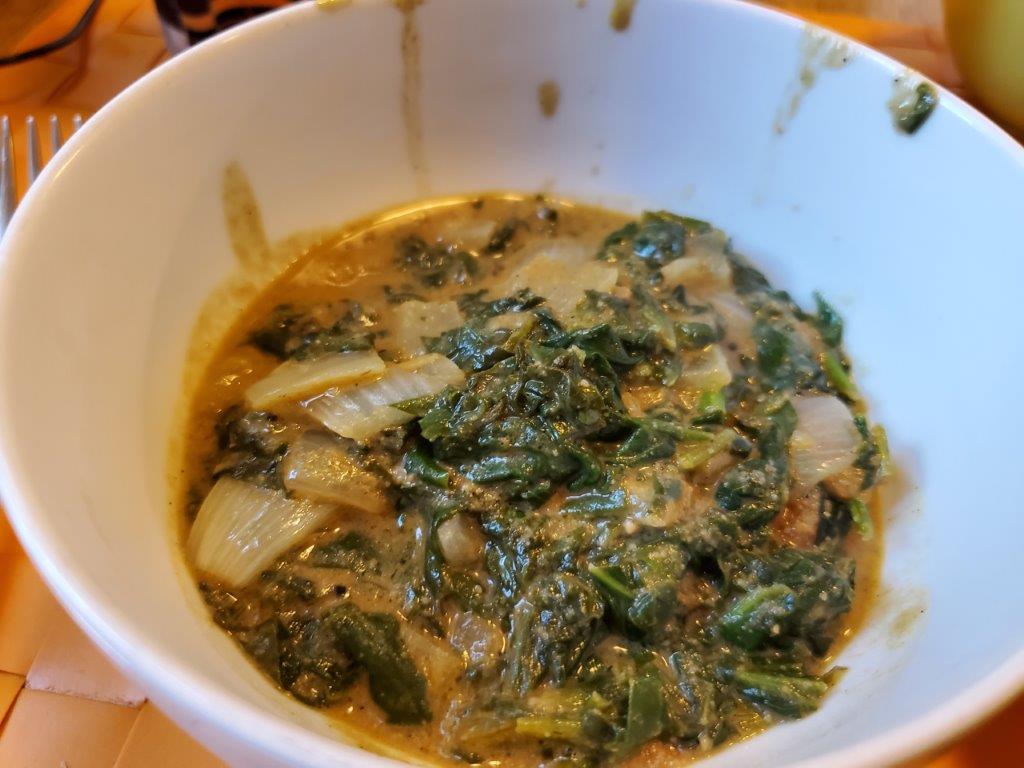On average, we’ve been doing one of these meals every few months because of all the work involved. So the idea of doing a second one four days later to… use up leftovers?? was a bit unusual.
But there you are. We made WAY too much cassava starch to go with Cabo Verde, and it’s a more or less ubiquitous item in African recipes, so we decided to see if we could get the Central African Republic done quickly enough to use it as a side dish.
Which leads into something I want to be very up front about: We are aware that this blog is somewhat problematic. We do not pretend to be experts on other cultures or their cuisines, nor are we amplifying the voices of those who are. We are a middle aged, north American white couple who likes to cook and eat, and are documenting our experiences with one way of systematically trying new things.
But some of those new things are from parts of the world which have been treated so poorly for so long that their local foodways have either been completely undocumented in any sort of authentic way, or worse, have been actively suppressed. It’s difficult enough for someone in Vancouver to determine what makes Macedonian food different from Croatian, and that’s just because research is hard; neither of those cultures were subject to the sorts of racism or colonialism screening us from a reasonably local description of what separates food in the Republic of the Congo from the Democratic Republic of the Congo.
And that’s not even ADDRESSING the fact that most of those country borders were imposed by Europeans in the first place.
So, yeah.
We’re going to keep making meals and writing it up here, but it is what it is – a chronicle of us having a loose rule for determining new things to cook. We are not presuming to speak for the peoples whose food we are attempting to approximate.
For a much more eloquent and detailed description of the issues this raises for CAR in particular we will, as always, refer you to the fabulous “Cooked Earth” entry for this country.
All that said, here’s some food. One of the reasons we decided doing a second country on the heels of Cabo Verde would be doable is that the recipes we selected used relatively easily available ingredients. (Except red palm oil, which we haven’t sourced yet in Vancover, so we let that one go.) Two stews, one with beef, which would be considered a special occasion luxury in much of CAR, and another with spinach and peanuts.
The beef stew was pretty straightforward. Simmer beef, onions, and tomato paste for several hours until tender.
Add okra and a habanero (standing in for a Scotch bonnet pepper, which I have never been able to find ANYWHERE, including Vancouver) and cook until thick.
We are very happy the Dutch oven made it with us to Canada – it’s already gotten more than enough use to justify the weight and storage space.
The other recipe called for natural peanut butter, which we didn’t have any of. What we DID have was raw peanuts, and it turns out you can turn one into the other pretty easily. Roast peanuts in the oven for 15 – 20 minutes, throw into Cuisinart, done!
That done, the final stew was pretty simple – saute onions, then add spinach, tomatoes, peanut butter, and another habanero.
The finished dishes were delicious! The beef stew was thick and hearty from the okra, and the spinach stew was spicy and filling. Both went well with the cassava starch, but didn’t come CLOSE to using it up. Seriously, we need to start making quarter batches of these cassava starch recipes, because they always make way more than we use.
These dishes were both so tasty, and used such easily acquired ingredients, that they’ll probably both make it into regular use in the future. Regardless of the issues with how we got here, we acknowledge that this is some pretty good food, and appreciate all the folks who brought it to us.
Recipes here. Next up, Chad! (And then the unthinkable happens – we’ll pass “Cooked Earth” guy and have to go back to ripping off less meticulously researched sources.)

